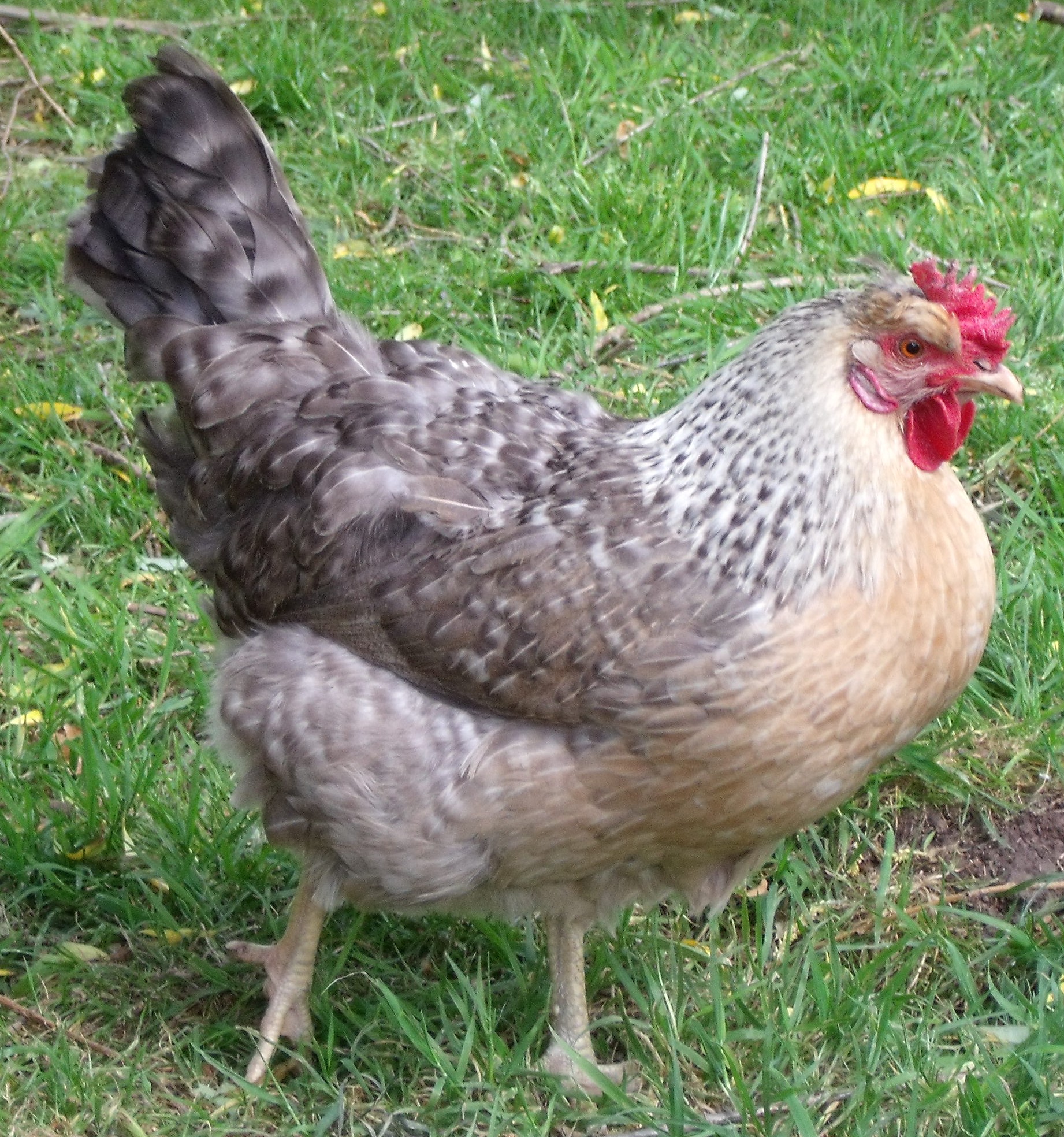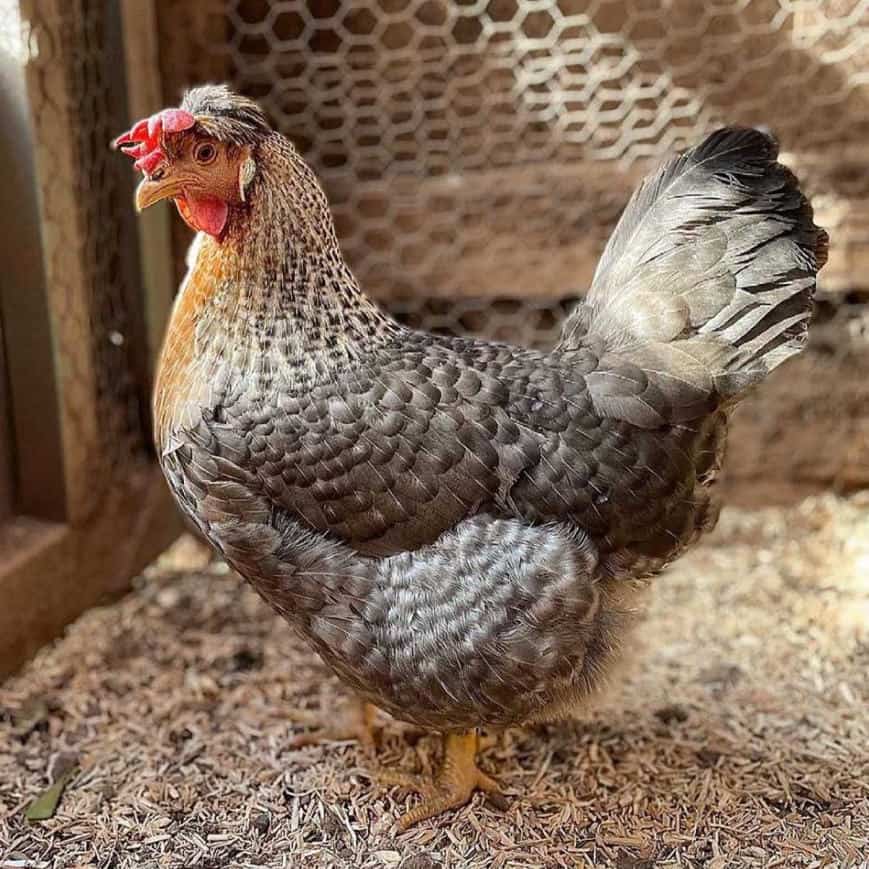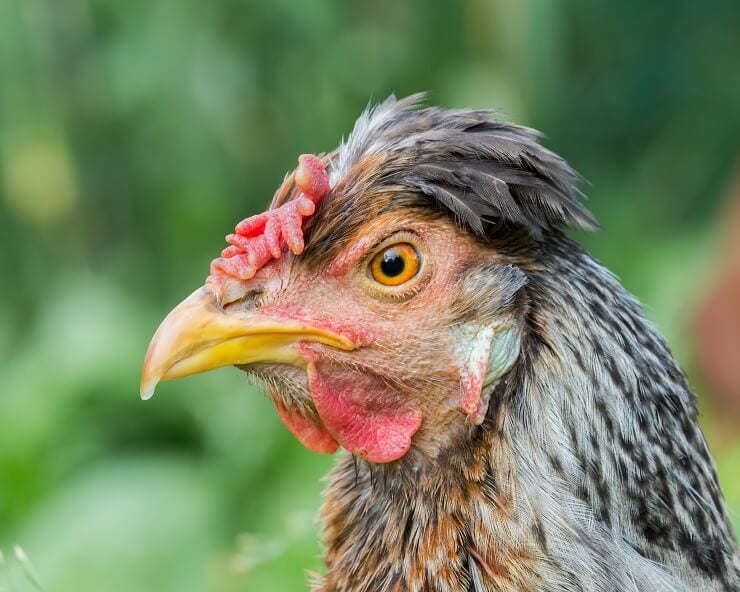The Cream Legbar Chicken: Blue Eggs, Crests, & Charm
For backyard chicken enthusiasts and aspiring homesteaders, discovering the perfect poultry breed can be an exciting journey. Among the myriad of choices, one breed consistently stands out for its unique blend of beauty, utility, and delightful personality: the Cream Legbar chicken. Renowned for their stunning blue eggs, distinctive crests, and remarkably friendly demeanor, these birds are much more than just egg layers; they're charismatic additions to any flock.
This comprehensive guide will delve deep into the world of the Cream Legbar, exploring its fascinating origins, characteristic traits, essential care requirements, and why this rare British breed has captured the hearts of chicken keepers across the globe. Whether you're a seasoned poultry owner or just starting your backyard flock adventure, prepare to learn everything you need to know about welcoming these charming, blue-egg-laying beauties into your life.
Table of Contents
- Unveiling the Cream Legbar Chicken: A Breed Apart
- A Century in the Making: The History of the Cream Legbar
- Distinctive Beauty: Cream Legbar Appearance & Standards
- The Blue Egg Phenomenon: Cream Legbar Egg Production
- Personality Plus: Temperament of the Cream Legbar Chicken
- Raising Your Flock: Essential Cream Legbar Care
- The Magic of Autosexing: Breeding Cream Legbars
- Is the Cream Legbar Right for Your Backyard?
Unveiling the Cream Legbar Chicken: A Breed Apart
The Cream Legbar chicken is not just another pretty face in the poultry world; it's a unique breed that brings a host of desirable traits to the backyard flock. Often referred to by various names such as the Crested Cream Legbar or even Opal Legbars, this breed is instantly recognizable. What truly sets them apart are three key characteristics: their distinctive crest of feathers atop their heads, their remarkably friendly and curious personality, and, perhaps most famously, their ability to lay beautiful blue-colored eggs. Unlike many other chicken breeds, the Cream Legbar also boasts an incredible feature known as "autosexing." This means that at hatch, male and female chicks can be distinguished simply by their down color and markings, eliminating the need for vent sexing or waiting for feather development. This trait alone makes the Cream Legbar an incredibly popular choice for both small-scale backyard keepers and larger breeders alike, streamlining the process of managing flock ratios and planning for future generations. Their combination of aesthetic appeal, practical benefits, and a delightful temperament makes them a truly special addition to any home.A Century in the Making: The History of the Cream Legbar
The story of the Cream Legbar chicken is one of deliberate genetic craftsmanship, albeit with a delightful twist of serendipity. This fascinating breed originated in Britain, specifically developed at Cambridge University in the early 20th century, making it a relatively modern creation compared to some ancient poultry lineages. Its journey across the Atlantic to the United States began nearly 100 years ago, where it has since gained immense popularity among American chicken enthusiasts. The creation of the Cream Legbar was a meticulous process involving a blend of several established chicken breeds. The primary genetic contributors were the Barred Plymouth Rock and the Brown Leghorn, chosen for their robust qualities and laying capabilities. However, the distinctive blue egg gene, a hallmark of the Cream Legbar, was introduced through the inclusion of Araucana genetics. Additionally, Golden Campine genetics were incorporated into the mix, contributing to the breed's unique feather patterns and overall vigor. Interestingly, the "cream" color that gives the breed its name wasn't part of the initial design plan. The original intention was to improve the Gold Legbar. When British geneticist Michael Pease attempted to refine the Gold Legbar by introducing White Leghorns into the breeding program, the plumage color unexpectedly shifted to the beautiful cream shade we see today. This accidental but delightful outcome resulted in a chicken with an attractive feather pattern, a super cute crest, and the sought-after ability to lay a large number of blue eggs. This blend of scientific intent and happy accident truly defines the unique heritage of the Cream Legbar chicken.Distinctive Beauty: Cream Legbar Appearance & Standards
The Cream Legbar chicken is a true showstopper in any flock, boasting a distinctive appearance that sets it apart from other breeds. Their aesthetic appeal is a major reason for their popularity, combining a charming demeanor with striking visual characteristics. The breed's name, "Cream Legbar," hints at its primary plumage color, which is a beautiful blend of gold, silver, and cream feathers, often with a unique striped or barred appearance that adds to their allure. One of the most iconic features of the Cream Legbar is its "super cute crest" of feathers that sits atop its head. This crest gives them a perpetually curious and endearing expression, contributing significantly to their overall charm. Beyond the crest, the Cream Legbar has a particular set of standards to meet, ensuring the purity and consistency of the breed. For hens, the principal characteristics include a stout, yellow beak that is slightly curved, with the point positioned in front of the comb. Their body is well-proportioned, reflecting their active nature. Roosters, on the other hand, exhibit their own unique grandeur. They are predominantly cream-colored, with long, flowing saddle and hackle feathers that add to their majestic appearance. A key distinguishing feature for roosters is the presence of dark gray barring on their breast, which contrasts beautifully with their lighter body plumage. Both sexes possess the attractive feather pattern that is a hallmark of the breed, making the Cream Legbar a visually captivating and highly sought-after chicken for enthusiasts worldwide.The Blue Egg Phenomenon: Cream Legbar Egg Production
For many backyard chicken keepers, the allure of the Cream Legbar chicken primarily lies in its remarkable ability to lay eggs of an extraordinary color: blue. While some may lay green eggs, the vibrant blue hue is what truly captures attention and adds a delightful splash of color to any egg basket. This unique trait, inherited from their Araucana ancestry, makes them a highly desirable breed for those seeking something beyond the conventional brown or white eggs. Beyond their captivating color, Cream Legbars are also known for their impressive production rates. They are considered high-production layers, meaning they can provide a consistent supply of eggs throughout the year. While specific numbers can vary, a healthy hen can typically lay anywhere from 3-5 large blue eggs per week. This makes them not only a beautiful addition to the flock but also a practical one for families looking for a steady supply of fresh eggs. However, it's important to remember that individual results may vary. The number and quality of eggs a Cream Legbar hen lays are directly influenced by several critical factors. Optimal care, including a well-balanced and nutritious diet, is paramount. Chickens require a diet rich in protein, calcium, and essential vitamins to support consistent egg production. Furthermore, the overall health of the bird plays a significant role; a healthy, stress-free hen is a productive hen. Environmental factors, such as adequate lighting and comfortable housing, also contribute to their laying consistency. By providing excellent care, chicken keepers can maximize the blue egg bounty from their Cream Legbar flock.Personality Plus: Temperament of the Cream Legbar Chicken
Beyond their striking appearance and blue eggs, the personality of a Cream Legbar chicken is often cited as one of its most endearing qualities. These birds are renowned for their friendly and curious nature, making them a joy to interact with and a wonderful addition to family flocks. Unlike some more skittish or aggressive breeds, Cream Legbars tend to be calm and approachable, often becoming quite personable with their human caretakers. Their curious personality means they are often seen exploring their surroundings, pecking around the yard, and investigating new sights and sounds. They are not typically prone to excessive flightiness, which makes them easier to manage in a backyard setting. This docile temperament makes the Cream Legbar chicken an excellent choice for first-time chicken owners, families with children, or anyone looking for poultry that is pleasant to be around. Children, in particular, often enjoy the gentle nature of these birds and the excitement of collecting their unique blue eggs. Their friendly disposition also makes them suitable for integration into existing mixed-breed flocks, provided proper introduction protocols are followed. While individual personalities can vary slightly, the general consensus among chicken enthusiasts is that Cream Legbars are a delightful, low-stress breed to keep. Their engaging behavior and amiable character truly make them feel like cherished members of the family, rather than just livestock.Raising Your Flock: Essential Cream Legbar Care
Providing proper care is fundamental to ensuring the health, happiness, and productivity of your Cream Legbar chicken flock. Like all poultry, they thrive in a clean, safe, and stimulating environment. Understanding their basic needs in terms of diet, housing, and health management will ensure your Cream Legbars lay those beautiful blue eggs consistently and remain vibrant members of your backyard.Diet & Nutrition for Optimal Health
A balanced diet is the cornerstone of a healthy Cream Legbar chicken. For optimal egg production and overall well-being, these birds require a high-quality layer feed. This specialized feed is formulated to provide the necessary protein, vitamins, and, crucially, calcium, which is essential for strong eggshells. Adult laying hens should have access to a complete layer feed, typically containing around 16-18% protein, at all times. In addition to their primary feed, supplemental calcium, such as oyster shell, should be offered in a separate feeder. Hens will self-regulate their calcium intake based on their needs, particularly during periods of high egg production. Treats can be given in moderation but should never constitute more than 10% of their daily diet to avoid nutritional imbalances. Fresh, clean water must always be available, as proper hydration is vital for digestion and egg laying. A well-nourished Cream Legbar will not only lay more eggs but also exhibit better feather quality, energy levels, and disease resistance.Housing & Environment Needs
Adequate housing is critical for the safety and comfort of your Cream Legbar chickens. A well-designed coop should provide at least 3-4 square feet of space per bird inside, with additional space in an attached run (10 square feet per bird is a good guideline). The coop must be secure against predators, with sturdy walls, wire mesh, and secure latches. Good ventilation is essential to prevent respiratory issues, but drafts should be avoided, especially in colder months. Nesting boxes, one for every 3-4 hens, should be provided in a quiet, dark area of the coop, encouraging them to lay their blue eggs in a designated spot. Roosting bars, positioned higher than the nesting boxes, allow the chickens to perch at night, which is their natural preference for sleeping. The coop and run should be regularly cleaned to maintain hygiene and prevent the buildup of ammonia and parasites. Providing dust bathing areas, either in the run or a designated container, allows them to naturally clean their feathers and deter external parasites.Common Health & Wellness Considerations
While Cream Legbars are generally hardy birds, like all chickens, they can be susceptible to common poultry ailments. Regular observation of your flock is key to early detection of any health issues. Look for signs such as lethargy, ruffled feathers, changes in appetite or droppings, and limping. Common concerns include internal and external parasites (mites, lice, worms), respiratory infections, and Marek's disease (for which vaccination is available for chicks). Maintaining a clean coop, providing fresh food and water, and ensuring proper ventilation are the best preventative measures. A balanced diet strengthens their immune system, making them more resilient to disease. If you suspect a health problem, isolating the affected bird and consulting with a veterinarian experienced in poultry can help provide a swift diagnosis and treatment plan. Regular health checks, including inspecting their combs, wattles, eyes, and legs, can help catch issues before they become severe, ensuring the long-term well-being of your Cream Legbar chicken.The Magic of Autosexing: Breeding Cream Legbars
One of the most remarkable and practical features of the Cream Legbar chicken is its "autosexing" capability. This genetic trait means that male and female chicks can be reliably distinguished at hatch simply by observing distinct differences in their down color and markings. For breeders and backyard enthusiasts alike, this eliminates the guesswork and complexity typically associated with sexing day-old chicks, making flock management significantly easier. In Cream Legbar chicks, males generally have a lighter, less defined stripe down their back, often with a clear, small spot on their heads. Females, on the other hand, typically have a darker, more clearly defined stripe and a less distinct or absent head spot. This immediate identification is invaluable for those who need a specific sex ratio, whether for egg production (hens) or breeding programs (roosters). It reduces the need for specialized equipment or expertise, simplifying the entire process of raising a Cream Legbar flock from day one.Incubating Cream Legbar Eggs
Incubating Cream Legbar eggs is a rewarding process that allows you to expand your flock and witness the magic of life firsthand. The principles for incubating Cream Legbar eggs are largely the same as for other chicken breeds, but precision is key for a successful hatch. First, select fertile eggs that are clean, uncracked, and ideally no more than 7-10 days old. Store them pointy-end down in a cool, humid place until ready for incubation. A reliable incubator is essential; it should maintain a consistent temperature of approximately 99.5°F (37.5°C) and a humidity level of around 45-55% for the first 18 days. For the final three days (the "lockdown" period), increase humidity to 65-75% to aid in hatching. Eggs should be turned at least 3-5 times a day for the first 18 days to prevent the embryo from sticking to the shell membrane. Many automatic incubators handle this automatically. Candling the eggs around day 7-10 allows you to check for fertility and embryo development, removing any infertile or non-developing eggs. With proper care and attention to temperature, humidity, and turning, you can look forward to the delightful sight of new Cream Legbar chicks, ready to grow into beautiful blue-egg layers.Is the Cream Legbar Right for Your Backyard?
Deciding on the right chicken breed for your backyard flock involves considering various factors, and the Cream Legbar chicken consistently emerges as a top contender for many reasons. Their unique combination of aesthetic appeal, practical benefits, and delightful temperament makes them an excellent choice for a wide range of chicken keepers, from novice enthusiasts to seasoned veterans. The primary draw for many is, of course, their stunning blue eggs, which add an element of surprise and beauty to the daily egg collection. Beyond the eggs, their high production rate ensures a consistent supply for your household. Their distinctive appearance, with the charming crest and attractive feather patterns, makes them a visually appealing addition to any garden or homestead. Furthermore, the friendly and curious personality of the Cream Legbar makes them a joy to interact with. They are generally docile and calm, making them suitable for families with children and easy to integrate into mixed flocks. The autosexing trait is another significant advantage, simplifying the process of identifying sexes at hatch, which is particularly beneficial for those looking to manage their flock size or breed their own birds. While individual results for egg production may vary based on care, diet, and overall health, the Cream Legbar consistently proves to be a reliable and rewarding breed. If you're looking for a chicken that offers beauty, personality, and a steady supply of colorful eggs, the Cream Legbar is undoubtedly a breed worth considering for your backyard.Finding Reputable Breeders
When you've decided the Cream Legbar chicken is the perfect fit for your flock, the next crucial step is finding reputable breeders. Sourcing healthy, genetically sound birds is paramount to starting your flock off on the right foot and ensuring their long-term well-being. A good breeder will prioritize the health and welfare of their birds, adhere to breed standards, and be transparent about their breeding practices. Start by researching local poultry clubs, online forums dedicated to chicken keeping, and breed-specific associations. Many reputable breeders will have a strong online presence, often with websites or social media pages showcasing their flocks. Look for breeders who are knowledgeable about the Cream Legbar breed, can answer your questions thoroughly, and are willing to provide references or allow farm visits (if practical). Inquire about their breeding stock, health testing protocols, and any guarantees they offer on their chicks or hatching eggs. Avoid breeders who seem overly focused on quick sales or who cannot provide clear information about their birds' lineage or health history. Investing a little extra time in finding a reputable source will pay dividends in the health, happiness, and productivity of your beautiful Cream Legbar chickens.The Cream Legbar chicken truly embodies the best of what a backyard chicken can be: a productive layer of beautiful blue eggs, a visually striking addition to the landscape, and a friendly, engaging companion. From their fascinating British origins and accidental cream plumage to their unique autosexing trait and amiable personality, these birds offer a comprehensive package for any poultry enthusiast.
- Racist Meme
- Gavin Casalegno Movies And Tv Shows
- Dante Beverly Hills
- Ucsd Applicant Portal
- Chasten Buttigieg
By understanding their specific needs for diet, housing, and health, you can ensure your Cream Legbars thrive, bringing joy and a splash of color to your daily life. Whether you're drawn to their charming crests, their curious nature, or simply the allure of a blue egg in your basket, the Cream Legbar chicken is a breed that consistently delivers. Have you had the pleasure of keeping Cream Legbars? Share your experiences and tips in the comments below, or tell us what other unique chicken breeds you're curious about!

Cream Legbar For Sale | Chickens | Breed Information | Omlet

Cream Legbar: Eggs, Height, Size and Raising Tips

Cream Legbar Chicken: Is This Blue Egg Wonder The Chicken For You